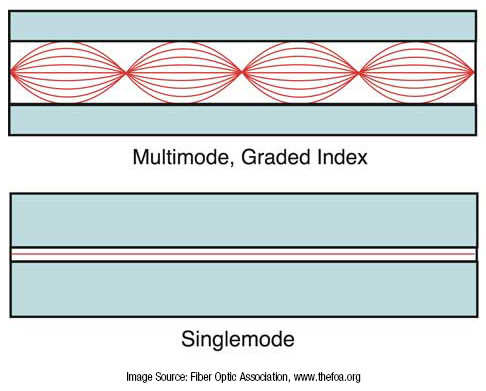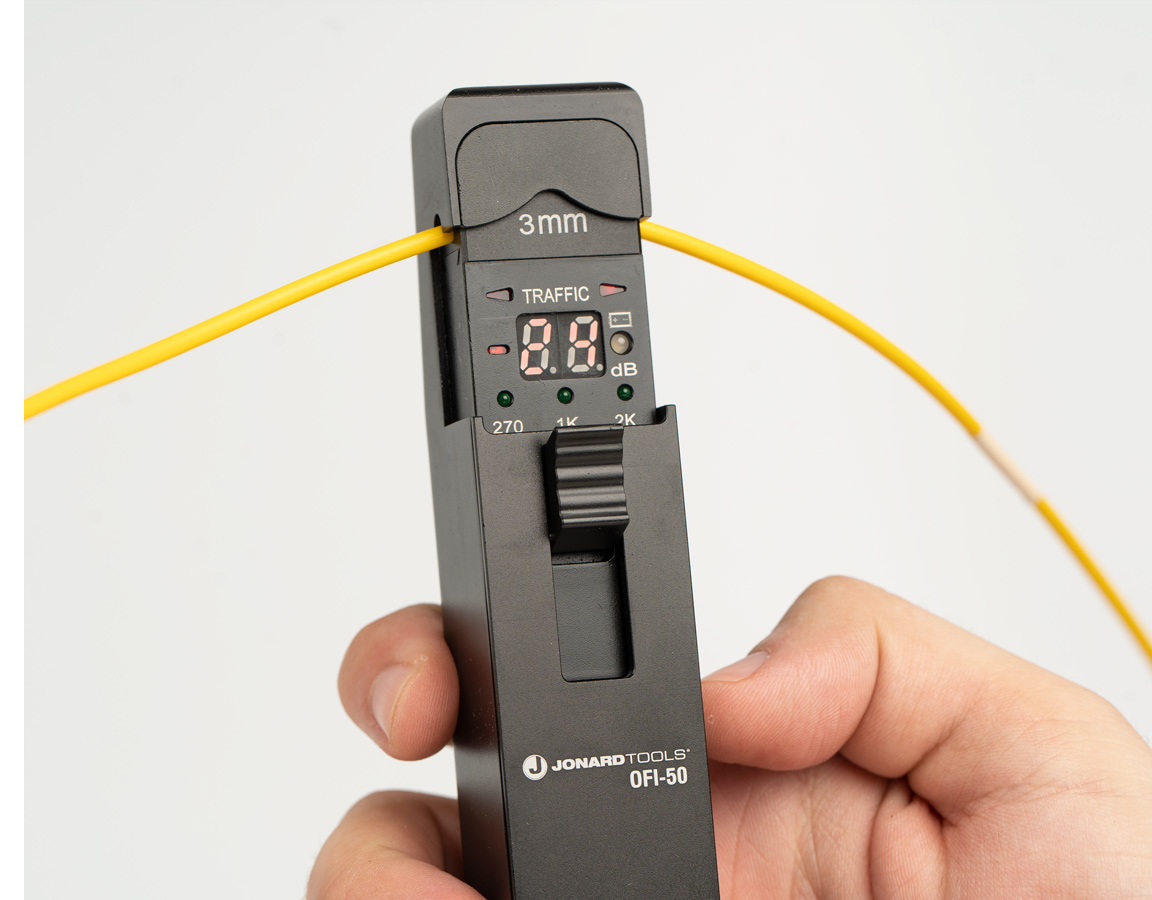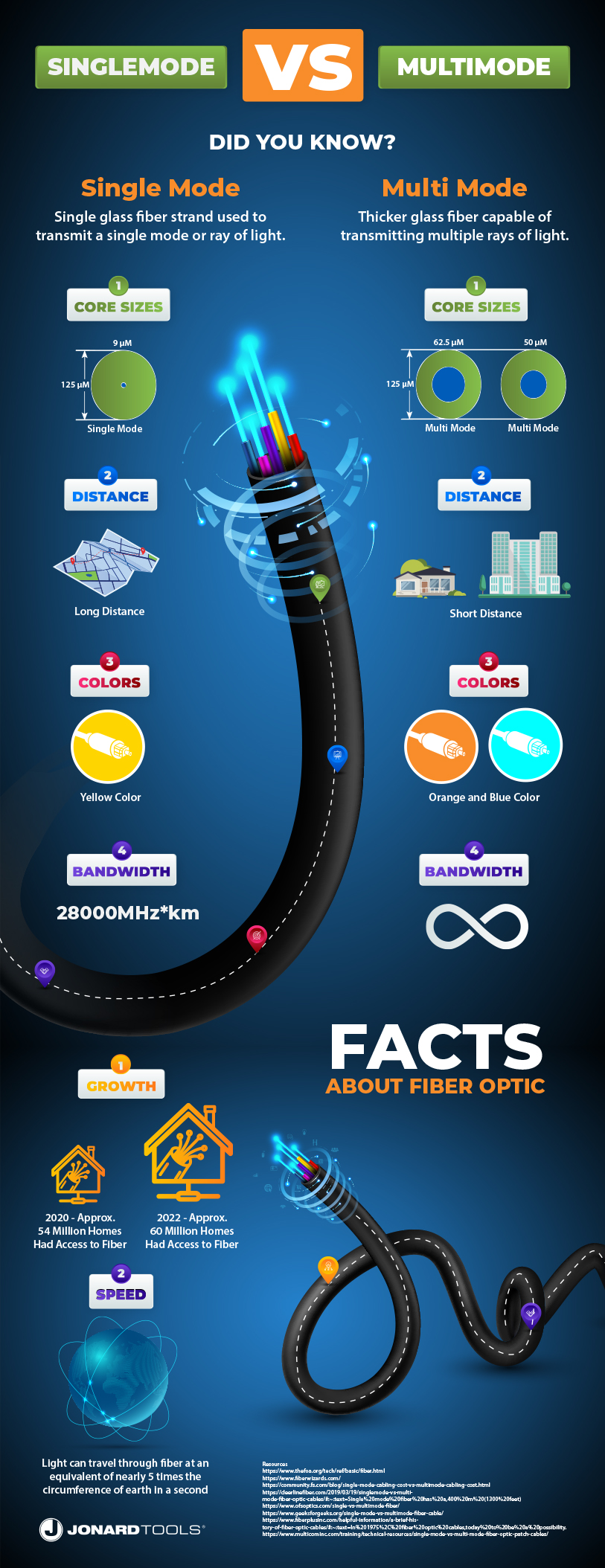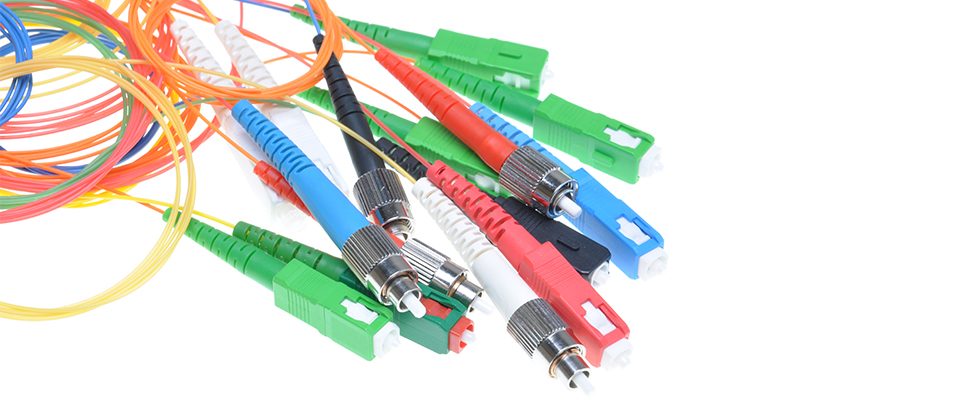Singlemode Fiber vs. Multimode Fiber – What is the difference?
What is the Difference Between Singlemode and Multimode Fiber Optic Cables?
We’ve heard this question asked so often that we decided to provide a brief description of the difference between the two, the similarities, as well as some common misconceptions about singlemode fiber and multimode fiber cables.
What are Fiber Optic Cables?
A fiber optic cable or an optical fiber cable is a medium that is used for transmitting optical signals from one place to another that has a strand of glass fibers inside an insulated casing.
Fiber optic cabling has been in use in the United States since the mid-1970s, beginning primarily with government agencies. However, it wasn’t until the mid-1990s when the first fiber optic cables started to be installed for commercial and residential use and changed the internet to what it is today. With the increased demand for faster data speeds came the evolution of fiber optic cabling.

Fiber optic cable is made up of a core, cladding, and a buffer. The core is the central part of the fiber where the light travels. The cladding is a material that surrounds the core and has a lower refractive index. The buffer is a material that surrounds the cladding and protects the fiber from damage.
So, what is the difference between singlemode and multimode fiber optic cables? Essentially, it all comes down to the core diameter of a fiber optic cable and signal dispersion over the length of the cable.
Difference Between Single Mode Fiber and Multimode Fiber Optical Cable
Data Transmission:
Singlemode fiber cables feature a smaller core from 8 to 10 micrometers can only support one type of data transmission mode and generally preferred for long-haul installations, and tend to be more expensive to install.
Multimode fiber optic cables feature a bigger core of 50 or 62.5 μm in diameter or larger that can support multiple data transmission modes. Multimode fiber is preferred for shorter distances and tends to be easier to install due to its larger cores, which are easier to align.

OFI-50, Optical Fiber Identifier
Bandwidth Capability
Another difference between the two cables is the bandwidth capability. Because of the core diameter of a singlemode fiber optic cable, only one signal/ray of light can pass through the fiber at a time. However, because singlemode fibers work with lasers that operate in wavelengths there is less attenuation or degradation of a signal, allowing transmissions to reach greater distances than with multimode fibers.
Distance
Generally, singlemode cables should be used over long distances (greater than 500 m), whereas multimode cables should be used over short distances (less than 500 m). Reason being – the larger core diameter in multimode fiber cables allows for a greater number of signals/ rays of light to travel through at a time. Thus, you’re most likely to find multimode cables in LAN backbones within individual buildings and singlemode cables in interbuilding connections or WANs (wide area networks).

MS-316, Mid Span Slit & Ring Tool.
Unlike singlemode fiber, there is a dispersion or degradation of the signal after a certain distance depending on the grade of multimode fiber type. These cables are graded from OM1-OM5 and each grade has a different bandwidth capacity. Typically, an OM1 grade cable will have an approximate recommended distance of 100 ft/33 m, whereas an OM4 grade cable will have an approximate recommended distance of 1,312 ft/400 m.
Color
Most singlemode cables are also color-coded yellow, while multimode cables are typically color-coded orange or aqua.

Conclusion
The selection of singlemode or multimode fiber optic cabling is based on whether it will need to be installed over a long (approximate maximum distance, 6 miles) or a short distance (approximate maximum distance, 1,800 feet).
While each type of fiber optic cable has its pros and cons, including installation cost, bandwidth, brightness, signal loss, etc., there is one constant that should be remembered, and that is not to mix them. Singlemode only works with singlemode cables, connectors, and electronics, and the same goes for multimode cables.
Fiber Optic Cabling At-A-Glance

Written by: Brenda Krulik, Project Coordinator, Jonard Tools
Jonard Tools Line of Fiber Optic Tools
Check out our catalog of fiber optic tools
Resources:
The Fiber Optic Association
The Fiber Wizards
FS Community
Cleerline Technology Group
OFS
GeeksForGeeks
FiberPlusInc
MultiComInc

Comments
Login or Register to post comments.